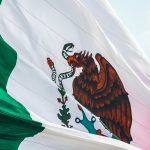The value of EU trade through free trade agreements with global partners surpassed €2 trillion for the first time in 2022, according to the 3rd Annual Report on the Implementation and Enforcement of EU Trade Policy.
The European Commission report shows that trade with our top 20 trade agreement partners grew by close to 30% on average in 2022. The Commission, working with Member States and EU businesses, also broke down over 30 barriers to trade in 19 countries. Tackling barriers over the last five years helped unlock 7 billion euros of EU exports in 2022 alone. Our agreements have also delivered stronger protection of the environment and labour rights.
The EU has the largest network of trade agreements in the world, with a total of 74 countries, accounting for 44% of all EU trade. In 2022, trade between the EU and its trade agreement partners (excluding energy products) outgrew EU trade with all other partners. These deals have helped sustain trade and investment in a difficult global business environment characterised by growing geopolitical challenges, such as Russia’s aggression against Ukraine.
Trade agreements support exports, resilience and diversification
Trade agreements continued to deliver economic growth and more resilient supply chains, by:
- Opening new export opportunities for EU producers and farmers: for example, under the respective trade agreements, EU exports in pharmaceuticals to Vietnam increasedby 152%, cars and parts to South Korea by 217%, EU exports of meat to Canada increased by 136% and EU services’ exports to Canada rose by 54%. EU trade supports 670 000 small and medium sized EU businesses exporting to third countries.
- Making exports more resilient to external shocks: In 2022, EU exports of sanctioned goods to preferential partners surged by €174 billion, offsetting by far the €27 billion lost in exports to Russia.
- Securing access to important inputs and reducing over-dependence on a single country: in the first five years of the EU-Canada (CETA) agreement, EU imports of critical raw materials from Canada rose by 56%, compared to growth of only 25% of these materials from other sources, contributing to the EU’s strategy to diversify away from Russia. Critical raw materials are essential for the green and digital transformations of the EU economy.
Removing barriers and progressing on disputes
In 2022, the Commission got 31 trade barriers removed in 19 partner countries. This helps boost EU exports in important sectors such as agri-food, pharmaceuticals, and health and beauty.
Examples include the US amending longstanding barriers to the import of sheep and goat products, and Costa Rica removing its decade-long 10% tax on EU imported beer.

El comercio de tierras raras aumentó en la Unión Europea en 2022 |
Dispute settlement at the World Trade Organization continued. The EU launched four new disputes, including the first ever with the United Kingdom, over a discriminatory subsidies scheme for green energy. This dispute was resolved after only four months through mutual agreement. The EU also prevailed in its dispute with Türkiye over discriminatory practices in pharmaceuticals, and is now monitoring Türkiye’s steps towards compliance.
Promoting sustainability
The EU also made progress on labour and environment issues under those agreements that include a Trade and Sustainable Development chapter. As part of this work, Japan and South Korea ratified core International Labour Organization conventions foreseen in their respective trade agreements with the EU. Deeper engagement with Peru and Colombia has led these countries to launch a revision of their labour codes.
More Information: European Commission







Leave a Reply